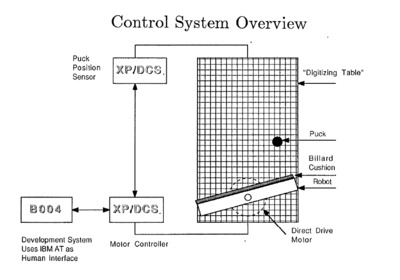We offer some preliminary analytical results concerning simplified models of Raibert’s hopper. We represent the task of achieving a recurring hopping height for an actuated “ball” robot as a stability problem in the setting of a nonlinear discrete dynamical system. We model the properties of Raibert’s control scheme in a simplified fashion, and provide conditions under which the procedure results in closed loop dynamics possessed of a globally attracting fixed point – the formal rendering of what we intuitively mean by a “correct” strategy. The motivation for this work is the hope that it will facilitate the development of general design principles for “dynamically dexterous” robots.
For more information: Kod*Lab


